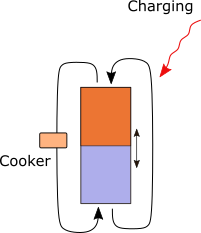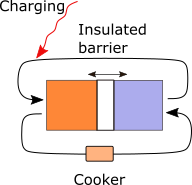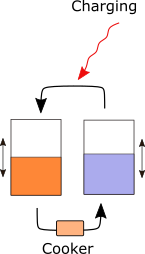Heat storage types
We have not worked with thermo-chemical storage options, only latent heat and sensible heat options.
Requirements:
We are preferably looking for solutions where we can store heat at a high temperature and at any time recover the heat to the cooker at the same high temperature.
Latent
heat with Phase Change Material (PCM)
| If we operate the heat storage within
the phase change region, the storage is at a near constant
temperature. It is then only the phase fractions which will change
as we charge or discharge the storage. We have tested the use of "solar salt" (Sodium and Potassium Nitrate mixture) as the melting point is suitable for frying cases (about 220 degrees C). Latent heat systems may be less appropriate for cooking applications, as the heat transfer rate can be difficult to regulate. |
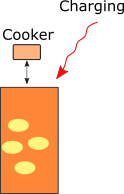 |
Sensible heat
| A weakness with a homogeneous sensible
heat storage is that the temperature increases and decreases with
the heat transfer in and out of the storage. The requirement of heat out to be at the same temperature as heat in can then be approximated by oversizing the heat storage, such that the temperature changes due to heat extraction for cooking are small. The oversized heat storage must then be kept at high temperatures, as recharging from cold will be time consuming. |
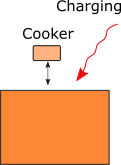 |
